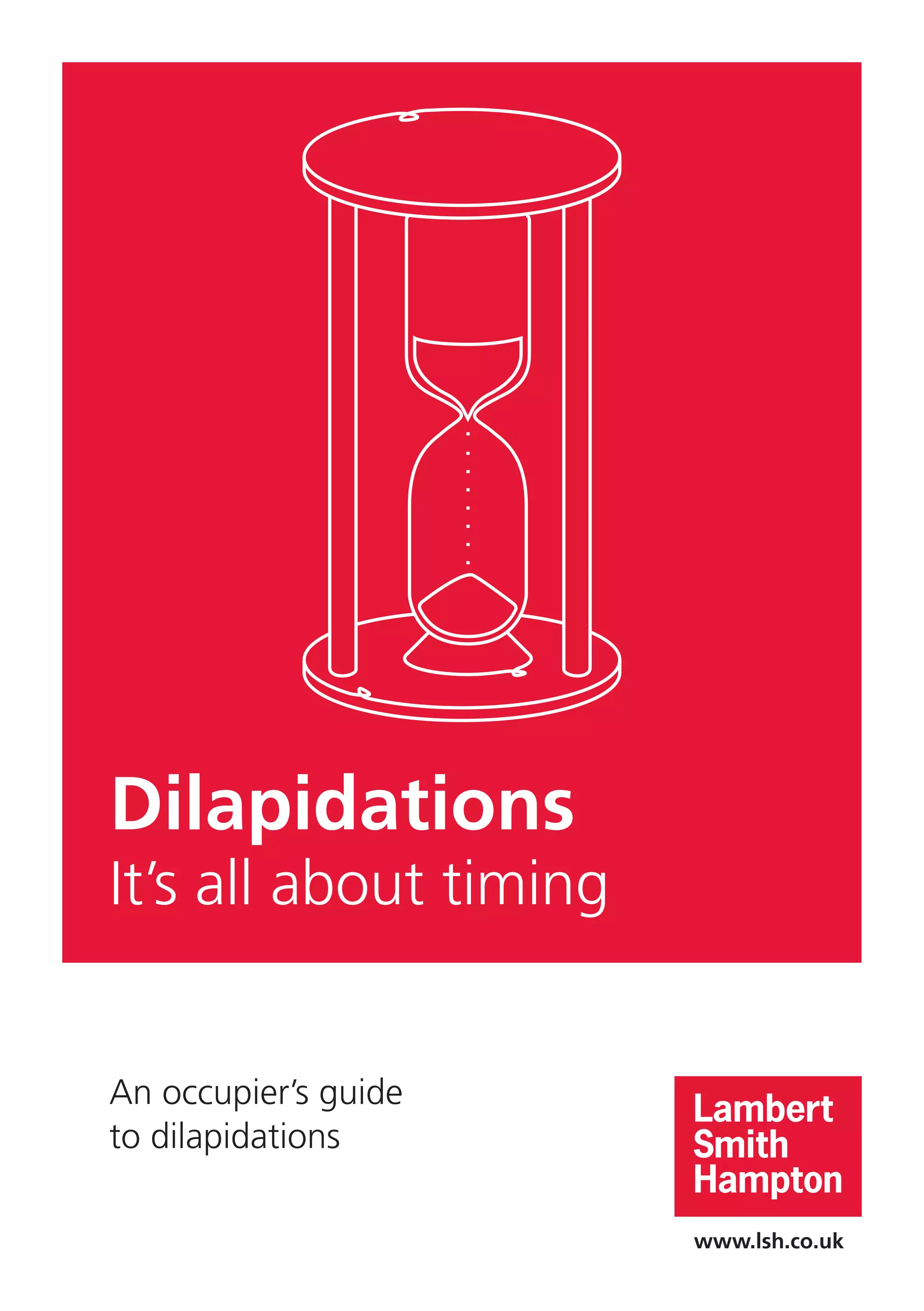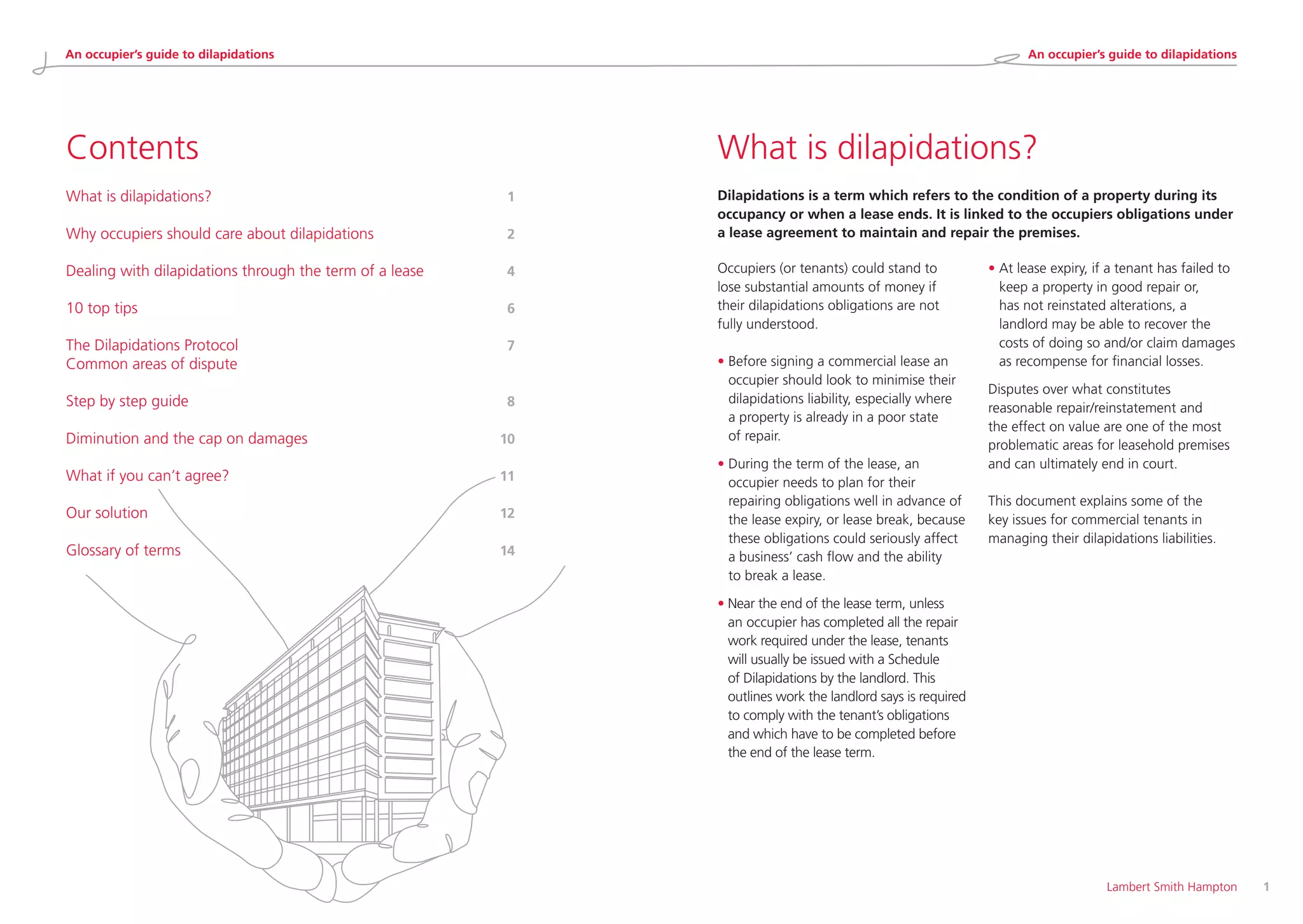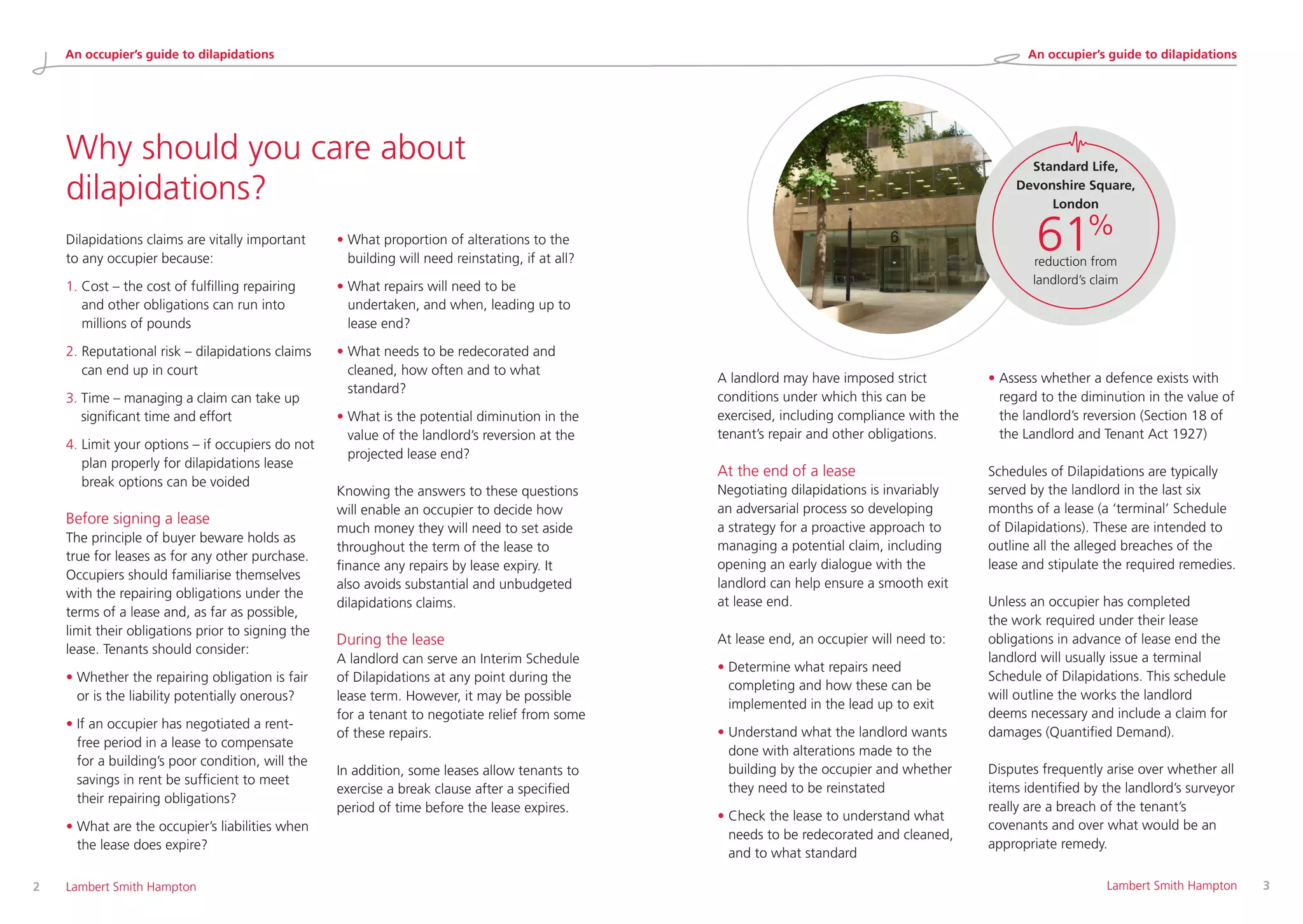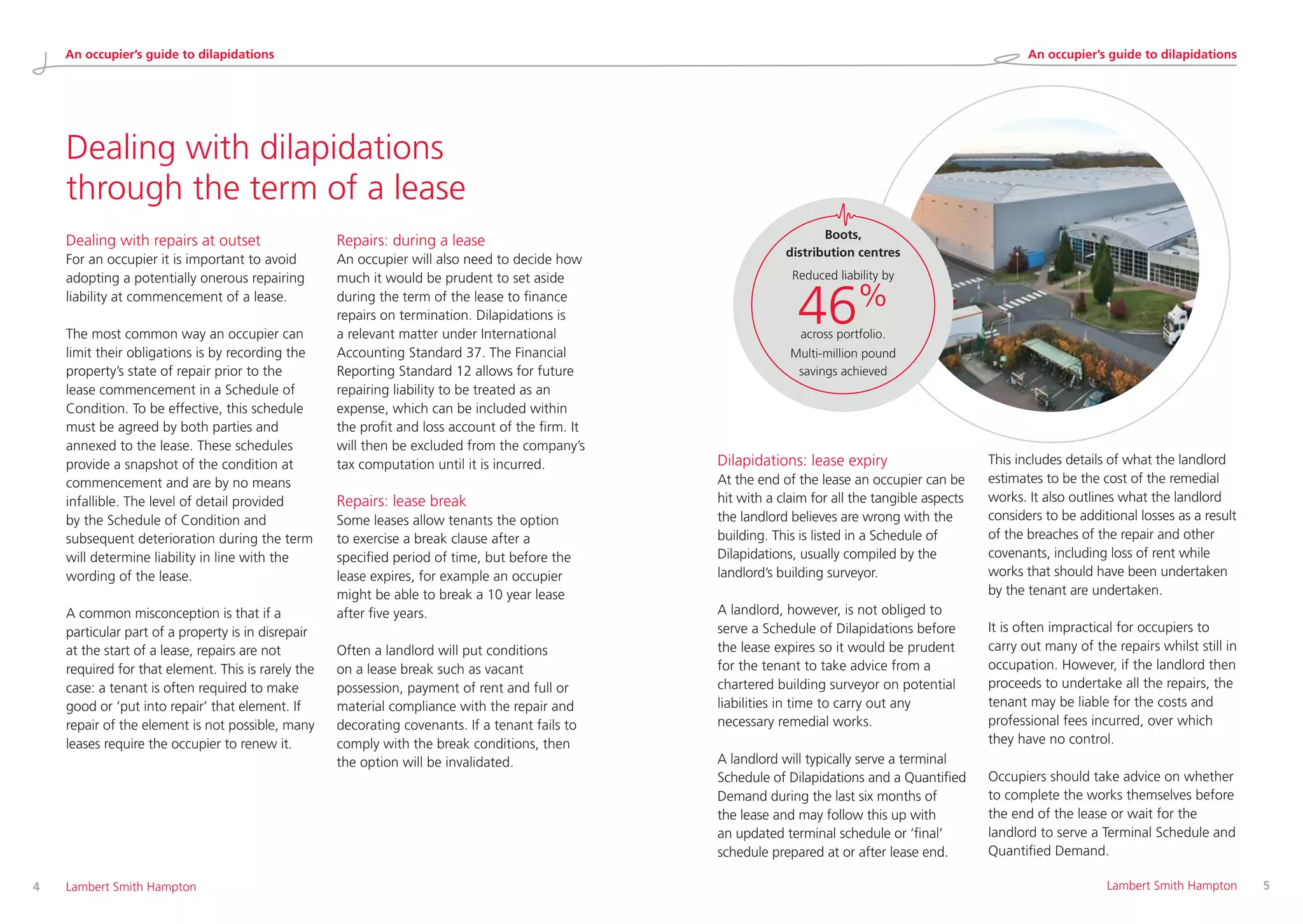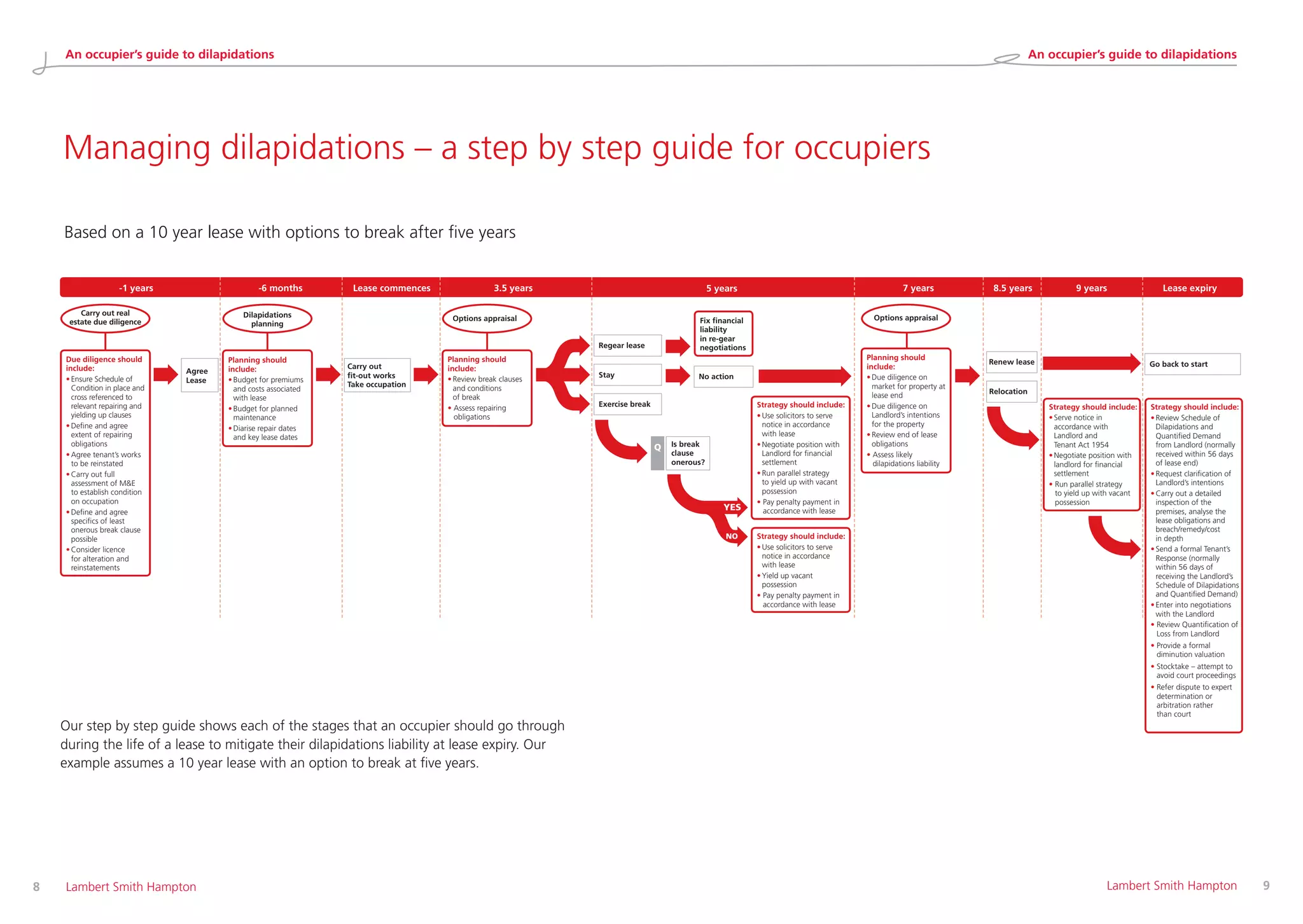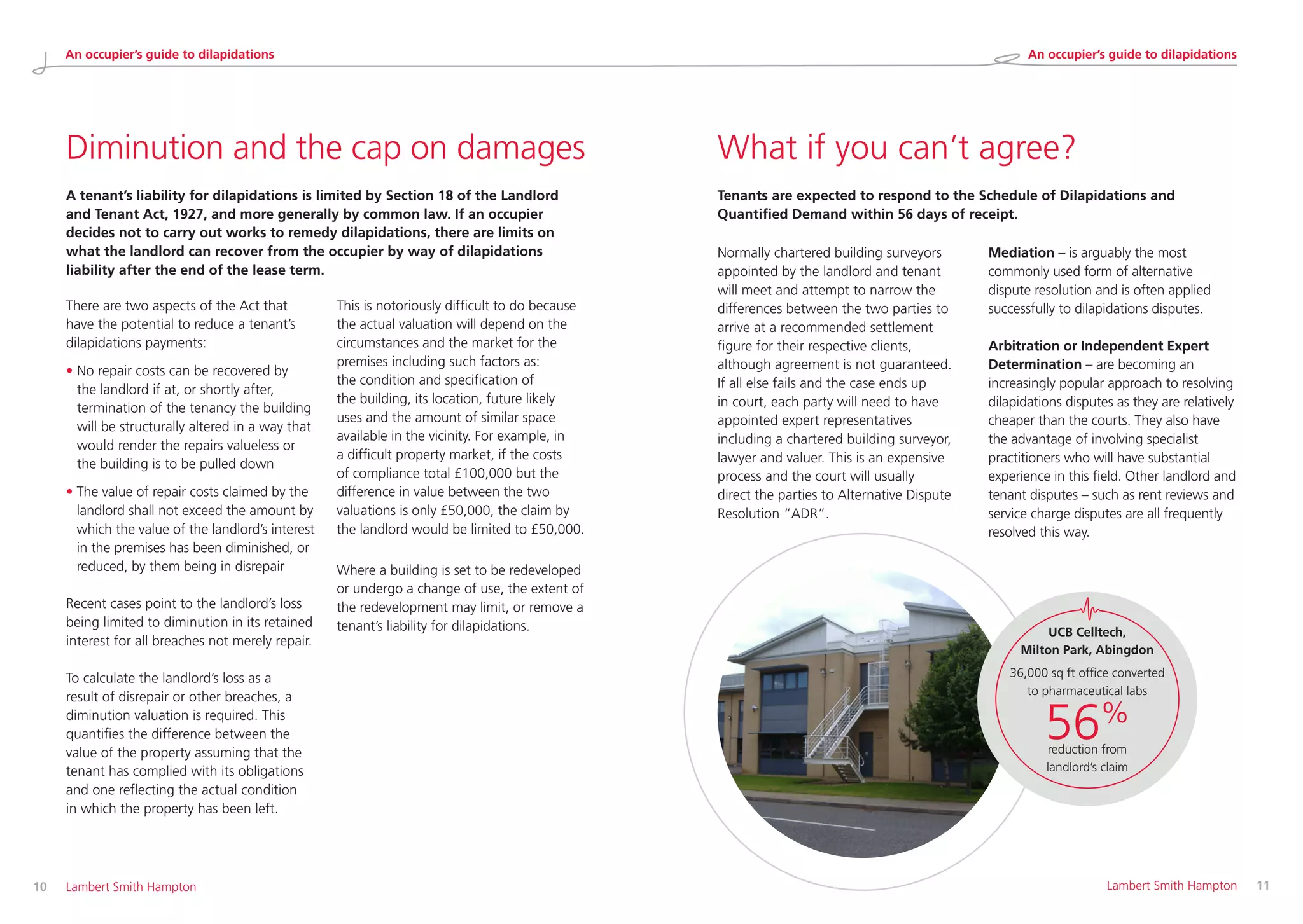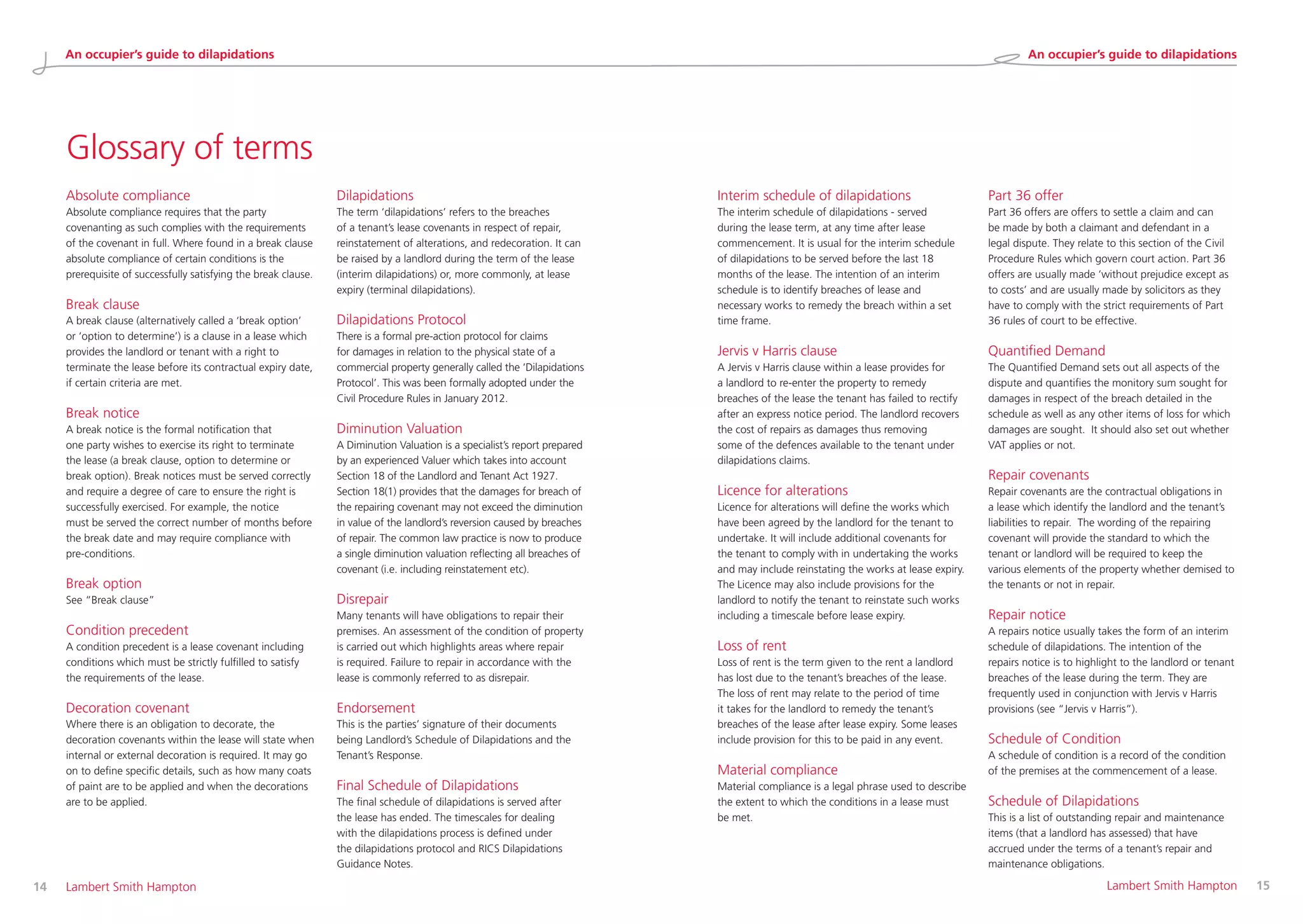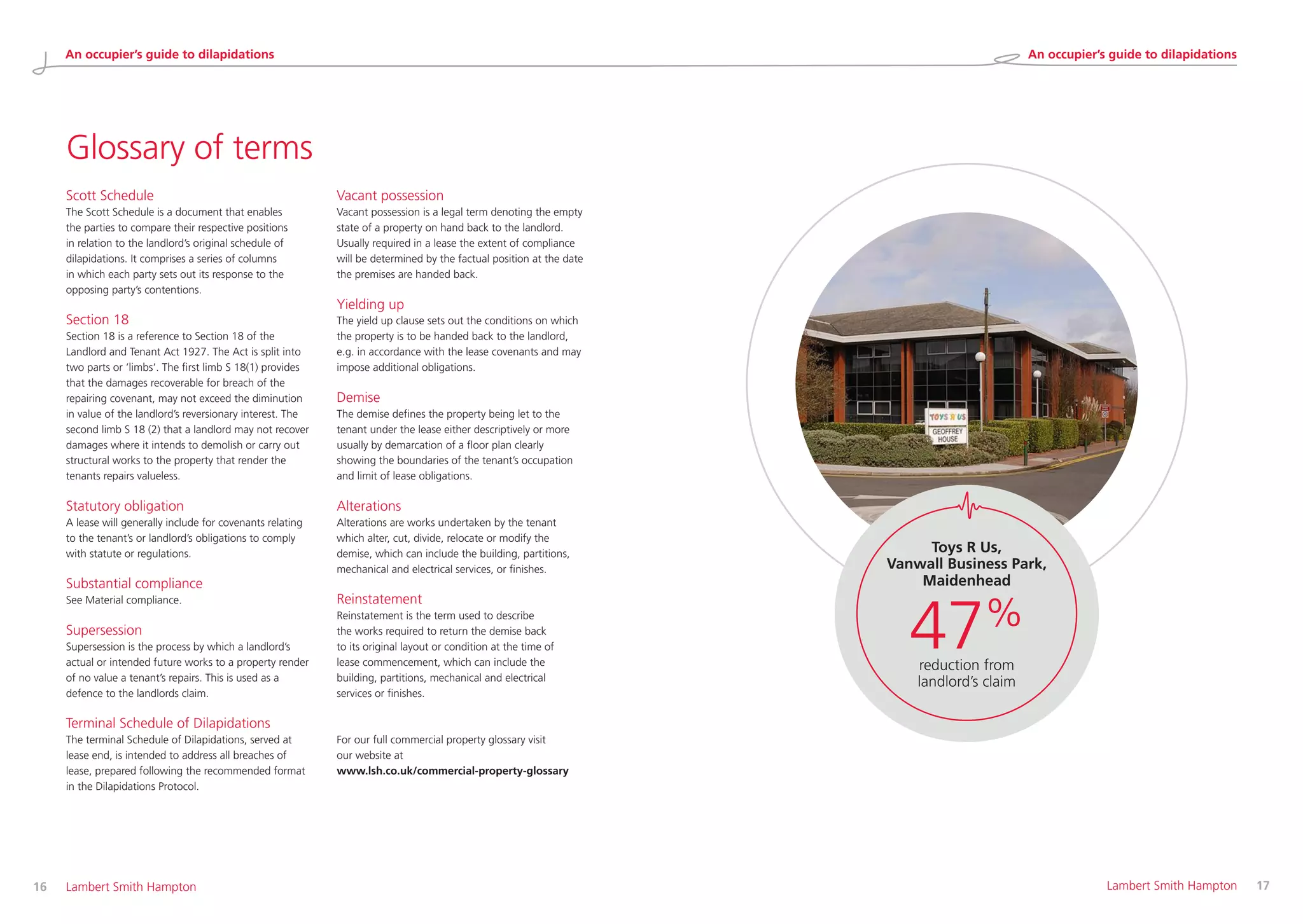This document provides an overview of dilapidations for commercial tenants. Some key points:
- Dilapidations refer to the condition of a leased property during occupancy or at the end of a lease term, relating to the tenant's obligations to maintain and repair.
- Tenants can face substantial costs if their dilapidations obligations are not understood before, during, and at the end of a lease.
- Before signing a lease, tenants should understand repair obligations and limit liability. During the lease, tenants must plan for and budget to complete repairs by the end of the term.
- At the end of the lease, landlords may issue a Schedule of Dilapidations outlining required repairs, and tenants
